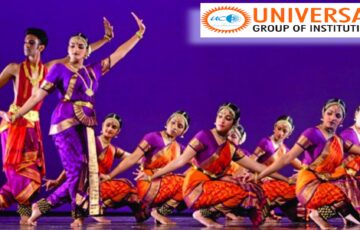Indian Art Heritage
Q. Safeguarding the Indian art heritage is the need of the moment. Comment.
Approach
|
Answer
India has a vast basket of living and diverse cultural traditions, traditional expressions, intangible cultural heritage comprising masterpieces which need institutional support and encouragement with a view to addressing areas critical for the survival and propagation of these forms of cultural heritage. Preserving our heritage is enshrined as a Fundamental Duty in our Constitution. The term heritage has wide connotations refers to the tangible heritage comprising Paintings and art forms; Ancient Monuments and Archaeological Sites; Sculptures; Scriptures; Artifacts.
Threats to Indian Art Heritage
- Theft: The incidents of thefts have been observed usually from unprotected monuments, ancient temples. The thefts cases have also been seen in the protected monuments and museums as well. It is due to negligence of security guards in museums, monuments etc.
- Smuggling: illicit traffic and smuggling in antiquities. Illicit traffic is motivated often by profit and sometimes by the demand for luxuries.
- Tourism: Unregulated tourism, tourist activities run by touts, private agents have affected the art heritage places. The Culture Ministry of India has reported that up to 24 Indian monuments have been declared “untraceable” or “missing” by the Archaeological Survey of India (ASI).
- Issues with security of museums: Most of the museums are poorly guarded due to shortage of manpower leading to theft of artifacts, fire accidents etc.
- Duplication: Fakes paintings and art forms leading to threat to livelihoods of artists.
- Poor Maintenance: The state of the wall paintings in Ajanta caves is continuously getting worse, which can be attributed to humidity as well as to a lack of care.
- Encroachment on monuments: Another miss from the ministry has been encroachments of monuments. Over 278 centrally protected monuments have been encroached upon or have illegal occupants, as per government data.
Rationale behind safeguarding the art heritage
- Evolution of human consciousness is a continuous process: History here serves as a laboratory and the past serves as a demarcation to understand the regional laws and social structures. This understanding helps in our progress towards an ideal society.
- The art heritage is the identity and pride of our country. It is the duty of every citizen to protect, preserve and perpetuate the cultural richness.
- Tourism potential for art monuments and museums is very high. Tourism generates revenue for the state as well as private artists due to the money-multiplier quality.
Infrastructure development takes place in and around the areas. Eg. Hampi, despite being a small town, has excellent infrastructure. - It creates jobs for a lot of people from art industry and tourism industry as well
- It creates a feeling of oneness and a sense of attachment by enhancing a sense of belonging to a culture or a region.
- Every historical site has an important story to tell and these stories have inspired many people to strengthen their convictions and commitment to fight injustice and oppression.
- Art and culture is also a part of soft power in world politics.
Way forward
Strengthening Legislation and Initiatives:
- The Antiquity Act of 1947, Antiquities and Art Treasures Act of 1972 particularly provide for the prevention of smuggling and illegally dealing in antiques.
- Recent bill to amend The Ancient Monuments and Archaeological Sites and Remains Act which allowed construction within 100 m of the protected monuments should be avoided.
- In 2015, the ministry launched an initiative of e-ticketing services in over 116 monuments under the ASI and launched an initiative to digitise cultural resources.
Strengthening institutions:
- The CAG report on Preservation and Conservation of Monuments and Antiques clearly indicates that the Archaeological Survey of India (ASI) for this purpose needs to be more proactive and vigilant in its efforts and the ministry needs to develop an aggressive strategy for the same
- Tapping of the Public —Private Partnership models for sustenance of Arts and Crafts eg Adopt A Heritage Scheme.
- Setting up at least one museum in each district with different chambers for visual and other forms of art, architecture, science, history and geography with regional flavor.
- Artistes from the field of architecture, sculpture, painting, handicrafts, puppetry, music, dance, theatre, and literature will be graded by the Centre on the basis of their performance.
Cultural awareness:
- Curriculum modification – Identification and inclusion of heritage as an asset in school, Open departments of Heritage management on the lines of Ahmedabad University
Introduction of a compulsory offline and online training for tourism purposes willing to undertake ventures. - Greater involvement of universities in schemes promoting arts and culture as well as inclusion of Fine Arts as a subject in universities.
Adaptive reuse of heritage sites:
- Restoring the historical sites in the form of festivals and inducing festivity link perceptions.
- Recognizing ‘cultural heritage tourism’ as an upcoming industry by building cultural resources with an adaptation of scientific and technological knowledge to local circumstances as well as forming partnerships between local and global bodies.
It is the duty of every citizen to value and preserve the rich heritage of our composite culture. Preservation and conservation of India’s rich cultural heritage and promotion of all forms of art and culture, both tangible and intangible, is essential and assumes a lot of importance.





